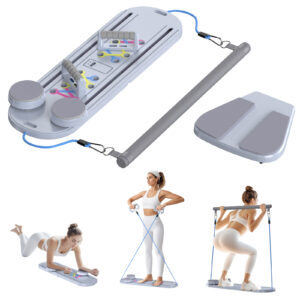Introduction: Why Choosing the Right Yoga Mat Matters
The Impact of a Good Yoga Mat on Your Practice
A high-quality yoga mat isn’t just an accessory—it’s a foundation for your entire practice. Whether you’re into Hatha, Vinyasa, or hot yoga, your mat influences balance, alignment, comfort, and even motivation. A mat that suits your style and body can help reduce injury risk, increase stability, and enhance your overall experience.
What Can Go Wrong With a Poor Yoga Mat Choice?
Using a low-quality or ill-suited yoga mat can lead to joint pain, slipping during poses, lack of support, or fast wear and tear. These issues can turn an enjoyable flow into a frustrating or even dangerous session—especially for beginners. That’s why understanding what to look for is crucial.
Common Yoga Mat Materials: Pros and Cons
PVC (Polyvinyl Chloride)
PVC is one of the most affordable and widely used materials. It offers excellent durability, cushioning, and grip. However, it is not eco-friendly and can emit an initial chemical smell. PVC mats are ideal for beginners on a budget but not the best for environmentally conscious users.
TPE (Thermoplastic Elastomer)
TPE mats are a newer, more eco-friendly alternative to PVC. They’re lightweight, non-toxic, and provide decent grip and cushioning. Although slightly pricier, they strike a good balance between performance and sustainability.
NBR (Nitrile Butadiene Rubber)
NBR mats are soft, thick, and great for those needing extra joint support. However, they tend to stretch and wear out quickly with intense use. They’re best suited for light home workouts rather than rigorous yoga flows.
Natural Rubber
Natural rubber mats are eco-friendly, non-toxic, and offer superior grip and cushioning. They are a bit heavier and more expensive, but ideal for serious yogis who value both performance and environmental responsibility.
Cotton, Jute, and Cork
These natural fibers are often used in eco-conscious yoga mats. Cotton provides a towel-like softness, jute is durable and rustic, and cork offers natural antimicrobial properties and a strong grip when wet. These are excellent for hot yoga or eco-friendly practitioners.
Yoga Mat Thickness Guide: Thin, Standard, or Extra Thick?
1-3mm: Ultra-Light and Travel-Friendly
Ideal for experienced yogis or those on the move, thin mats offer strong ground connection but minimal cushioning. Best for balance-intensive practices and travel.
4-6mm: The Standard Comfort Zone
This is the most common thickness range, providing a solid mix of comfort, stability, and portability. Suitable for all levels and most yoga styles.
6mm and Above: Extra Cushion for Sensitive Joints
Perfect for beginners or those with joint sensitivity. These mats offer excellent padding but may compromise on stability during balance poses.






